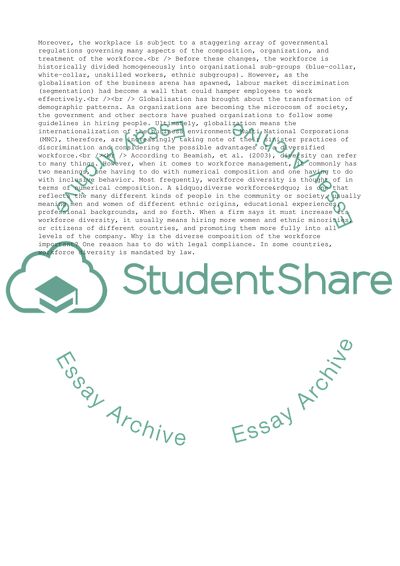Cite this document
(Diversity and Equal Opportunities Case Study Example | Topics and Well Written Essays - 2250 words, n.d.)
Diversity and Equal Opportunities Case Study Example | Topics and Well Written Essays - 2250 words. Retrieved from https://studentshare.org/management/1539676-explain-the-concepts-of-diversity-management-and-equal-opportunities-and-discuss-possible-dilemmas-that-might-occur-when-firms-seek-to-pursue-both-a-diversity
Diversity and Equal Opportunities Case Study Example | Topics and Well Written Essays - 2250 words. Retrieved from https://studentshare.org/management/1539676-explain-the-concepts-of-diversity-management-and-equal-opportunities-and-discuss-possible-dilemmas-that-might-occur-when-firms-seek-to-pursue-both-a-diversity
(Diversity and Equal Opportunities Case Study Example | Topics and Well Written Essays - 2250 Words)
Diversity and Equal Opportunities Case Study Example | Topics and Well Written Essays - 2250 Words. https://studentshare.org/management/1539676-explain-the-concepts-of-diversity-management-and-equal-opportunities-and-discuss-possible-dilemmas-that-might-occur-when-firms-seek-to-pursue-both-a-diversity.
Diversity and Equal Opportunities Case Study Example | Topics and Well Written Essays - 2250 Words. https://studentshare.org/management/1539676-explain-the-concepts-of-diversity-management-and-equal-opportunities-and-discuss-possible-dilemmas-that-might-occur-when-firms-seek-to-pursue-both-a-diversity.
“Diversity and Equal Opportunities Case Study Example | Topics and Well Written Essays - 2250 Words”. https://studentshare.org/management/1539676-explain-the-concepts-of-diversity-management-and-equal-opportunities-and-discuss-possible-dilemmas-that-might-occur-when-firms-seek-to-pursue-both-a-diversity.


